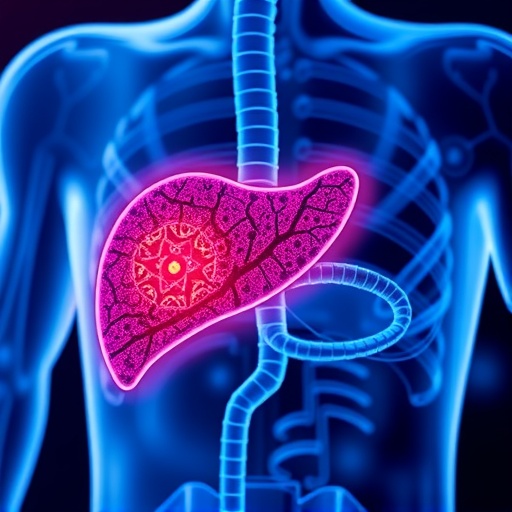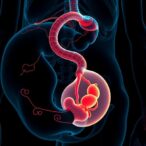
The progressive epidemic of non-alcoholic fatty liver disease (NAFLD) and its more aggressive form, non-alcoholic steatohepatitis (NASH), has increasingly drawn the focus of the scientific community due to their direct links with hepatocellular carcinoma (HCC). Central to this pathological progression are regulated cell death pathways, mechanisms of cellular demise intricately tied to disease onset, progression, and potential therapeutic targeting. Emerging research reveals that modulating these pathways—apoptosis, necroptosis, pyroptosis, ferroptosis, PANoptosis, and cuproptosis—offers promising avenues for halting or even reversing NAFLD/NASH progression and associated carcinogenesis.
Apoptosis, the programmed and orderly cellular self-destruction process, plays a pivotal role in NASH development and its subsequent HCC transformations. Hepatocyte apoptosis is markedly amplified during NASH, not merely as a consequence but as a driving force exacerbating liver injury, fibrosis, inflammation, and tumorigenesis. Intrinsic mitochondrial dysfunction characterizes this apoptotic escalation. In animal models, nicotine exposure has been demonstrated to downregulate CDGSH iron-sulfur domain-containing protein 3 (CISD3), impairing mitochondrial efficiency and heightening oxidative stress. This pathological cascade exacerbates hepatocyte apoptosis, underscoring CISD3 as an emerging therapeutic focus in NAFLD.
Delving deeper into intrinsic apoptotic regulation reveals the critical influence of the BCL-2 protein family. Mitochondrial outer membrane permeabilization (MOMP), a decisive event in apoptosis initiation, is orchestrated by these proteins. Innovative pharmacological approaches, such as the acridone derivative A22, manipulate the BCL-2 gene promoter’s unique i-motif structure, elevating BCL-2 expression and attenuating hepatocyte apoptosis. This breakthrough represents the pioneering endeavor to exploit gene promoter architectures for therapeutic benefit in NASH. Similarly, the anti-apoptotic factor Mcl-1 is regulated via a feedback loop involving PNPT1, which modulates its mRNA stability under lipid-rich conditions, influencing mitochondrial permeability and apoptosis.
.adsslot_POxXBYa5yG{ width:728px !important; height:90px !important; }
@media (max-width:1199px) { .adsslot_POxXBYa5yG{ width:468px !important; height:60px !important; } }
@media (max-width:767px) { .adsslot_POxXBYa5yG{ width:320px !important; height:50px !important; } }
ADVERTISEMENT
The extrinsic apoptotic pathway is equally compelling in the NAFLD/NASH arena. BID, a pro-apoptotic BH3-only protein, has garnered attention for its capacity to instigate mitochondrial apoptotic signals. Advanced siRNA frameworks targeting BID have achieved marked therapeutic effects, reducing fibrotic progression and inflammatory sequelae in murine models by diminishing key mitochondrial effectors BAX and BAK. Another notable target, receptor-interacting protein kinase 1 (RIPK1), governs the extrinsic apoptotic cell fate decision. Post-translational modifications such as deSUMOylation by SENP1 temper RIPK1 activity, mitigating cellular susceptibilities to apoptosis and positioning RIPK1 as a node for therapeutic intervention.
Central executors of apoptosis—caspases—are not exempt from focused modulation strategies. Pan-caspase inhibitors like emricasan demonstrated robust suppression of apoptotic enzymes caspase 3 and 7 in clinical trials, alongside favorable safety and tolerability profiles, underscoring their clinical potential. Emerging selective inhibitors targeting caspase 2 have also shown promise in restraining the transition from NAFLD to NASH, exemplifying the sophisticated refinement of apoptotic modulation.
Parallel to apoptosis, necroptosis—a regulated necrotic form of cell death characterized by plasma membrane rupture—has surfaced as a critical contributor to NAFLD pathophysiology. Necroptotic execution is mediated chiefly through the RIPK1/RIPK3/MLKL signaling axis. Pharmacological inhibitors of RIPK1, such as necrostatin-1s and RIPA-56, have demonstrated efficacy in attenuating inflammation, fibrosis, and liver injury in murine models. RIPK3 inhibition similarly reduces hepatocyte necroptosis, modulating oxidative stress and inflammatory cascades, though its role is complex, underscored by epigenetic silencing in primary hepatocytes and variable expression profiles in disease states. This nuanced relationship necessitates patient-specific considerations for therapeutic targeting.
The terminal effector MLKL further consolidates necroptotic signaling, and its deficiency confers protective effects against NAFLD progression by dampening lipid synthesis and inflammatory chemokine expression. Regulatory nodes extending beyond direct necroptotic mediators, such as ER stress-related proteins Derlin-1 and transcription factors like ATF3 and FOXO1, have emerged as influential in modulating necroptosis, opening additional therapeutic horizons. Intriguingly, necroptosis also manifests in non-parenchymal liver cells including natural killer cells and liver sinusoidal endothelial cells, highlighting the systemic nature of regulated cell death in NASH.
Pyroptosis, an inflammatory form of programmed cell death triggered by inflammasomes and punctuated by cell lysis and pro-inflammatory cytokine release, represents a escalating focus in NASH research. The NLRP3 inflammasome is a linchpin in this context, mediating hepatocyte pyroptosis and perpetuating fibrotic remodeling. Pharmacological inhibition of NLRP3 via molecules such as CY-09, MCC950, and others not only mitigates lipid accumulation but also temper inflammation and fibrosis. Beyond NLRP3, other inflammasomes like AIM2 have been implicated, activated by mitochondrial DNA, adding layers of regulatory complexity.
Gasdermin D (GSDMD), the executor pore-forming protein in pyroptosis, is notably elevated in NASH, with gene knockout models exhibiting decreased hepatic inflammation and fibrosis. Caspases, specifically caspase-11 and caspase-1, serve as upstream activators of pyroptosis via GSDMD cleavage and inflammasome modulation, and their inhibition has been linked to ameliorated disease markers. Beyond these direct effectors, regulatory pathways involving transcription factors (e.g., NR5A2, p-STAT3), pattern recognition receptors (TLR4), and non-coding RNAs intricately orchestrate pyroptotic responses, suggesting multifaceted opportunities for pharmacologic intervention.
The intersection of metabolic regulation and cell death is further highlighted by the application of antidiabetic drugs. SGLT2 inhibitors, GLP-1 receptor agonists, and others have demonstrated modulation of apoptosis and pyroptosis pathways, reflected in altered caspase activity and inflammasome components. However, differential effects, such as metformin’s facilitation of helicase-mediated pyroptosis in leptin-resistant models, underscore the necessity for nuanced understanding of drug actions within metabolic and hepatic contexts.
More recently, PANoptosis has been conceptualized as a coordinated cell death program integrating apoptosis, necroptosis, and pyroptosis, regulated through complex sensor and effector protein networks. Evidence implicates mitochondrial dysfunction as a key initializer, with herbal formulations like Si-Wu-Tang exhibiting protective effects by preserving mitochondrial integrity and suppressing mtDNA-mediated activation of PANoptotic pathways. Key proteins such as ZBP1 facilitate PANoptosome assembly, though their roles in NAFLD/NASH remain unexplored, representing critical frontiers for mechanistic and therapeutic research.
Ferroptosis, an iron-dependent form of regulated necrosis driven by lipid peroxidation, is increasingly recognized for its role in amplifying inflammation and hepatocyte death in steatohepatitis. Inhibitors of lipid peroxidation and iron chelators demonstrate potent hepatoprotective effects by interrupting ferroptotic cascades. Regulatory nodes such as ACSL4 and GPX4 are central, with therapeutic modulation via small molecules, transcription factors like ATF4, and epigenetic regulators providing promising strategies to attenuate ferroptosis. The crosstalk between ferroptosis and metabolic dysregulation is profound, evidenced by scaffold proteins like EFHD2 in immune cells influencing ferroptosis and fibrosis progression and the impact of gut microbiota and diet-derived metabolites on ferroptotic pathways.
Cuproptosis, a nascent form of regulated cell death induced by aberrant copper metabolism, has recently been associated with NAFLD progression and its malignant transformation. Bioinformatic analyses have unveiled multiple cuproptosis-related genes implicated in disease severity and prognosis. Proteins such as FDX1, CTR1, and LIAS surface as pivotal regulators, affecting mitochondrial function, oxidative stress, and lipid metabolic homeostasis. Furthermore, compounds influencing copper handling and ion transport show therapeutic promise, while insights from studies in hepatic stellate cells and hepatocellular carcinoma broaden the potential applicability of cuproptosis-targeted therapies within the liver disease spectrum.
Collectively, the intricate landscape of regulated cell death pathways influencing NAFLD/NASH pathogenesis and progression to HCC underscores an era ripe for innovative therapeutic development. Targeting apoptosis, necroptosis, pyroptosis, PANoptosis, ferroptosis, and cuproptosis offers convergent strategies to disrupt hepatocyte injury, fibrosis, and tumorigenesis. As the field advances through integrating mechanistic insights, emerging technologies such as single-cell analytics, gene editing, and nanodelivery platforms promise to refine precision medicine approaches. Ultimately, unraveling the interconnected networks governing hepatic cell fate decisions holds the key to mitigating the global health burden imposed by metabolic liver diseases.
Subject of Research: Targeting regulated cell death pathways in the progression of NAFLD/NASH and hepatocellular carcinoma
Article Title: Killing hepatocellular carcinoma in the NAFLD/NASH stage: a comprehensive perspective on targeting regulated cell death
Article References:
Xi, J., Lei, S., Chen, J. et al. Killing hepatocellular carcinoma in the NAFLD/NASH stage: a comprehensive perspective on targeting regulated cell death.
Cell Death Discov. 11, 281 (2025). https://doi.org/10.1038/s41420-025-02558-x
Image Credits: AI Generated
DOI: https://doi.org/10.1038/s41420-025-02558-x
Tags: apoptosis in liver diseaseBCL-2 protein family rolesCISD3 and oxidative stressemerging liver cancer therapieshepatocellular carcinoma preventionmechanisms of hepatic cell demisemitochondrial dysfunction in hepatocytesNASH and cancer progressionnon-alcoholic fatty liver disease treatmentregulated cell death pathwaysreversing NAFLD and NASHtherapeutic targeting of cell death



